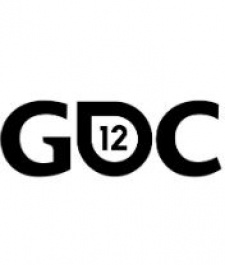This experience well used during his GDC 2012 talk; subject 'The rise of free-to-play core gaming'.
Rip it up
"Free-to-play is the most important disruption in the core video games market, more than casual, more than mobile," Lasky argued.
"Distribution innovation in video games has historically created the greatest wealth.
"Content is really, really important, but the way the big companies have generated big market caps is via distribution."
He pointed that free-to-play isn't a genre. It's a marketing strategy. It's a value creation strategy.
It's also part of a wider trend to unbundle media. Examples include the album versus the individual song, the TV network versus the individual episode, and the newspaper versus the individual story.
Economics F2P
"Free-to-play is about giving everything away, and it's a little bit scary," Lasky explained.
Diving into demand economics, he highlighted the advantage of F2P over a single priced packaged game.
Not only does the latter cut out people who won't or can't pay the price, it also leaves money on the table from people who would be prepared to pay more.
Free-to-play enables the market to pay whatever individuals want. "It expands the elasticity of the demand curve," Lasky summarised.
In addition, this means that games companies don't have to spend a lot of money on expensive advertising, they can use the 'power of free' as a viral distribution channel.
However, the content is different; it's a service that your customers will engage with regularly, rather than a one-shot experience.
Core gamer, core spenders
Of course, this is well understand in terms of the casual free-to-play market.
The point of Lasky's talk, however, was that core gaming is the biggest opportunity.
"Core games still command the vast majority of revenues in the industry," he said.
"Zynga's annual revenues is around $650 million a year, while EA's has around $3 billion of core gaming revenues."
As an investor, his first contact with the concept was in 2007 when he started discussions with the team behind League of Legends.
"It took me all of 30 minutes to decide to do it, because they [Riot Games] were so passionate and smart about what they wanted to do," he recalled.
Legendary
What was important was that going free-to-play would enable a start up to easily enter the market.
And as game based on the World of Warcraft mod Defense of the Ancients, there was an existing audience -between 7 to 12 million - who would be interested in the game.
But there were risks; notably that the budget required for such as high quality game that would appeal to core gamers would require a higher conversion rate and higher monetisation rate than had typically been seen from Facebook casual games.
Lasky didn't break out revenue figures, merely showing recent figures that show League of Legends has had 32.5 million installs, has 11.5 million monthly active users and 1.2 million peak concurrent users.
10 steps
As for Lasky's advice on how to succeed in such an environment, he highlighted 10 success attributes, (in reverse order of importance).
- Robust cloud-based infrastructure
- World-class e-commerce system
- Publishing platform that enable third party integration
- Social marketing competence
- An aggressive focus on reducing distribution friction - any click reduces your profitability
- Great data, great analytics and smart analysts
- Virtual good competency
- Customer acquisition leverage
- A profound commitment to customer service
- Great content designed for free-to-play
As for his takeaway, Lasky said that "Scale is the most important feature."
"It lets you amortise your investment in infrastructure, your user acquisition is more efficient and it enables you to reduce risk with new products."
As for his view on the future, he said there was an opportunity for a new billion dollar company to rise in the core free-to-play space.
His companies to watch were Riot/Tencent, Valve/Steam, EA/Origin, Nexon, Activision/Blizzard and Zynga.






















